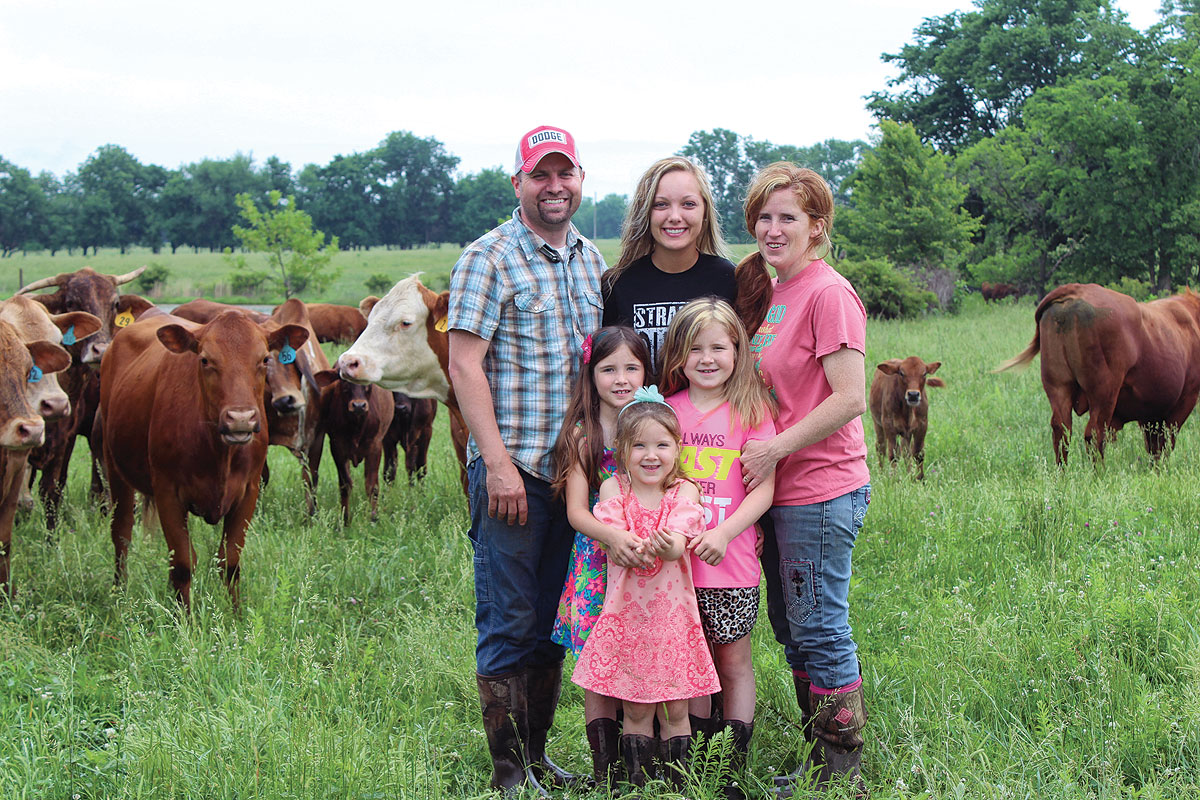 Feta, Brie and Marscapone; yes, these are the names of some tasty goat cheeses, but they are also the names for three of the Saanen milk does owned by Christie Moore of Rocky Horse Acres in Rocky Comfort, Mo. Tall and gentle, these all white goats are considered the Holstein of the dairy goat breed.
Feta, Brie and Marscapone; yes, these are the names of some tasty goat cheeses, but they are also the names for three of the Saanen milk does owned by Christie Moore of Rocky Horse Acres in Rocky Comfort, Mo. Tall and gentle, these all white goats are considered the Holstein of the dairy goat breed.
Christie has several does, including two Sables, which are considered Saanen’s with “party clothes.” The Sable goat is the same as a Saanen, but with colored markings and is recognized as a different breed, though characteristics are the same. Instead of breeding the does to a Saanen or Sable buck last fall, Christie opted to breed the does with a Boer buck. The large Saanen does have no problem having the Boer cross kids. Christie explained, “I bred all the does to a Boer buck because I didn’t want any more milk goats. The crossbreeds are hardier, and will grow and get to market faster.” She is planning on taking all the kids to market at approximately 8 weeks old and hopes to get meat goat prices, “especially if they look Boer.”
Kidding has just taken off at the Rocky Horse Ranch, so Christie isn’t milking full time yet. “I separate the does out in the evening so I have the milk in the morning,” said Christie, who is allowing the kids to nurse until they are 8 weeks old. When the kids are weaned, she will be milking them twice daily. Christie explained that, “Goats have a bell curve with milk production, they start out with less, then grow in production and then it slowly lessens again.” This year, Christie has built an additional milk stand, so she can milk two does at once utilizing her automatic milk machine. She hopes that this will cut milking time in half. Getting milking done quicker also aids in keeping the environment sterile, as Christie pointed out, “Clean-up and sterilization are so important.
“I tried Saanen milk and loved it,” and that is why she chose the breed. Saanen’s have high milk production and are lower in fat than some other breeds. “It’s so healthy for you,” said Christie about the milk. “I prefer to drink it raw, because pasteurization kills a lot of good things.” She has also made a lot of different goat milk cheese, which her and husband, Chris, enjoy a lot. Christie sells her milk and cheese directly off the farm to those who prefer goat’s milk, or like to drink it because of its easy digestibility and health benefits. Christie also occasionally gets bottle calves to raise and likes being able to use surplus goats milk for feeding.
Along with Christie’s milk goat herd, her and Chris have a small herd of beef cattle that graze on their 40 acres. Most of the time, the goats and cattle, along with two horses graze on the pastures together, though they have built smaller pens for keeping the goats up when necessary. They have installed four-strand electric fencing along the traditional five-strand barbed wire fence to keep the goats in and haven’t had any issues with wandering goats. Their property also has a spring-fed stream and pond that keeps all the animals in contact with fresh running water, even during freezing winter weather.
Besides the livestock, Christie and Chris grow a large garden and sell produce at both the Neosho and Webb City farmers market. On their diverse farm this small herd of Saanen’s are a useful addition.







